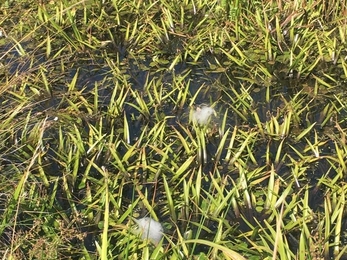Whilst visiting Carlton Marshes during the hot summer months it can be difficult to spot many birds, but if you take the time to notice our smaller inhabitants you will get a real treat. Through June to October staff and volunteers survey the fen raft spider populations at Carlton and Castle Marshes. These rare spiders can be difficult to spot, but on dewy mornings their webs can stand out on the surface of the dykes. Once you've found one, use your binoculars to search for the young spiders in the webs and the female standing guard nearby. This year webs can easily be seen in the dykes either side of the main track at Carlton Marshes. Another beautiful spider to look out for is the wasp spider, which can be seen in meadows throughout August. Lound Lakes is the best local nature reserve to spot these striking spiders.
Dragonflies are also performing their dyke-side dramas throughout the summer and Carlton Marshes is one of the best nature reserves in the country for spotting a huge range of dragonfly species. All of these different species means there is an array of interesting behaviours to observe. Some dragonflies, like the male emperor dragonflies, can be seen patrolling their territories attacking other dragonflies that enter it. Females can be seen laying their eggs, also called ovipositing, in a range of different ways. Some females lay their eggs into plants, carefully choosing specific types of plant in the perfect location. Willow emerald damselflies prefer willow overhanging a dyke or slow running stream, whilst norfolk hawker dragonflies prefer to lay their eggs into water soldier - one of the rare aquatic plants found here at Carlton. Other dragonflies are a bit less picky and simply flick their eggs haphazardly into the water.









